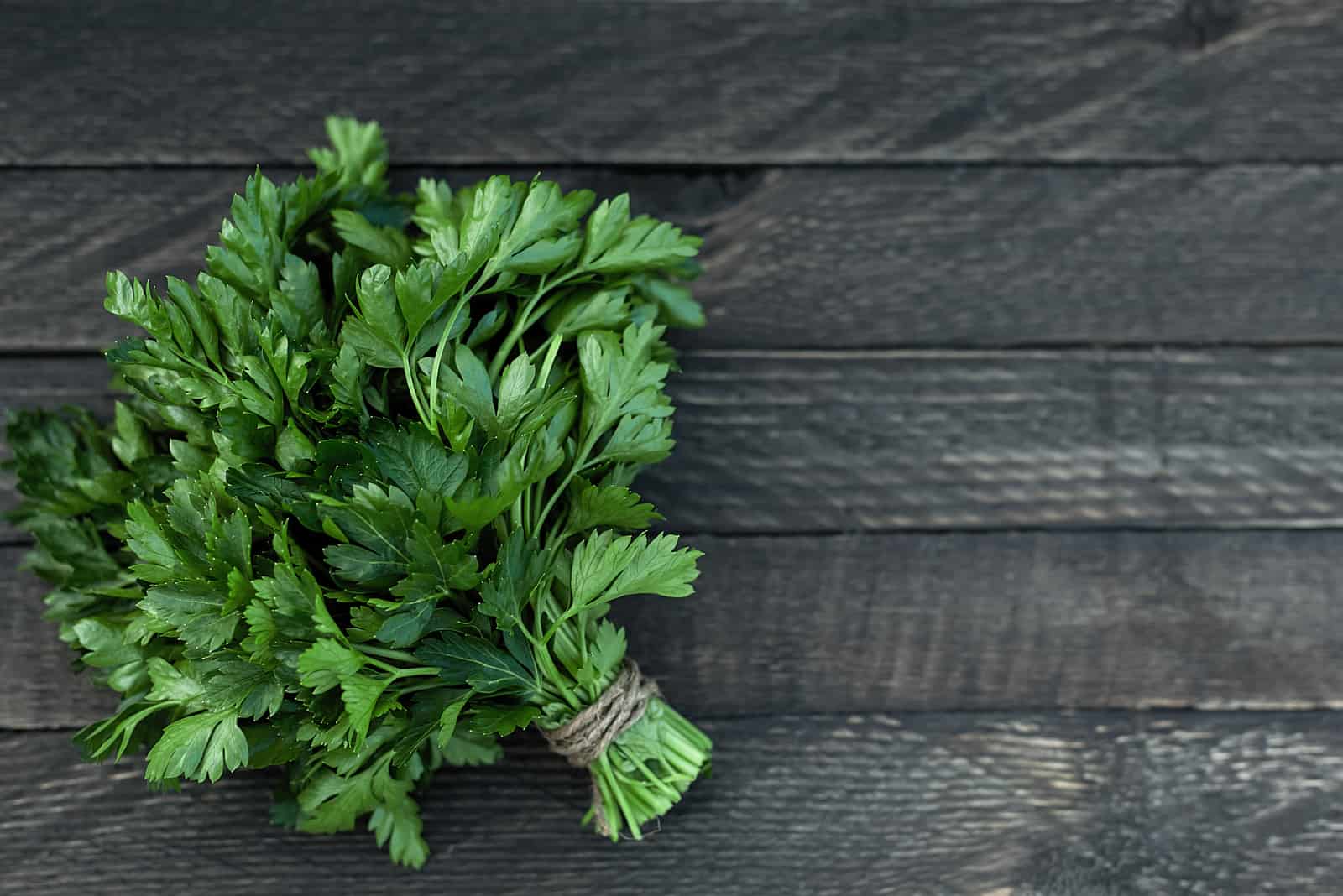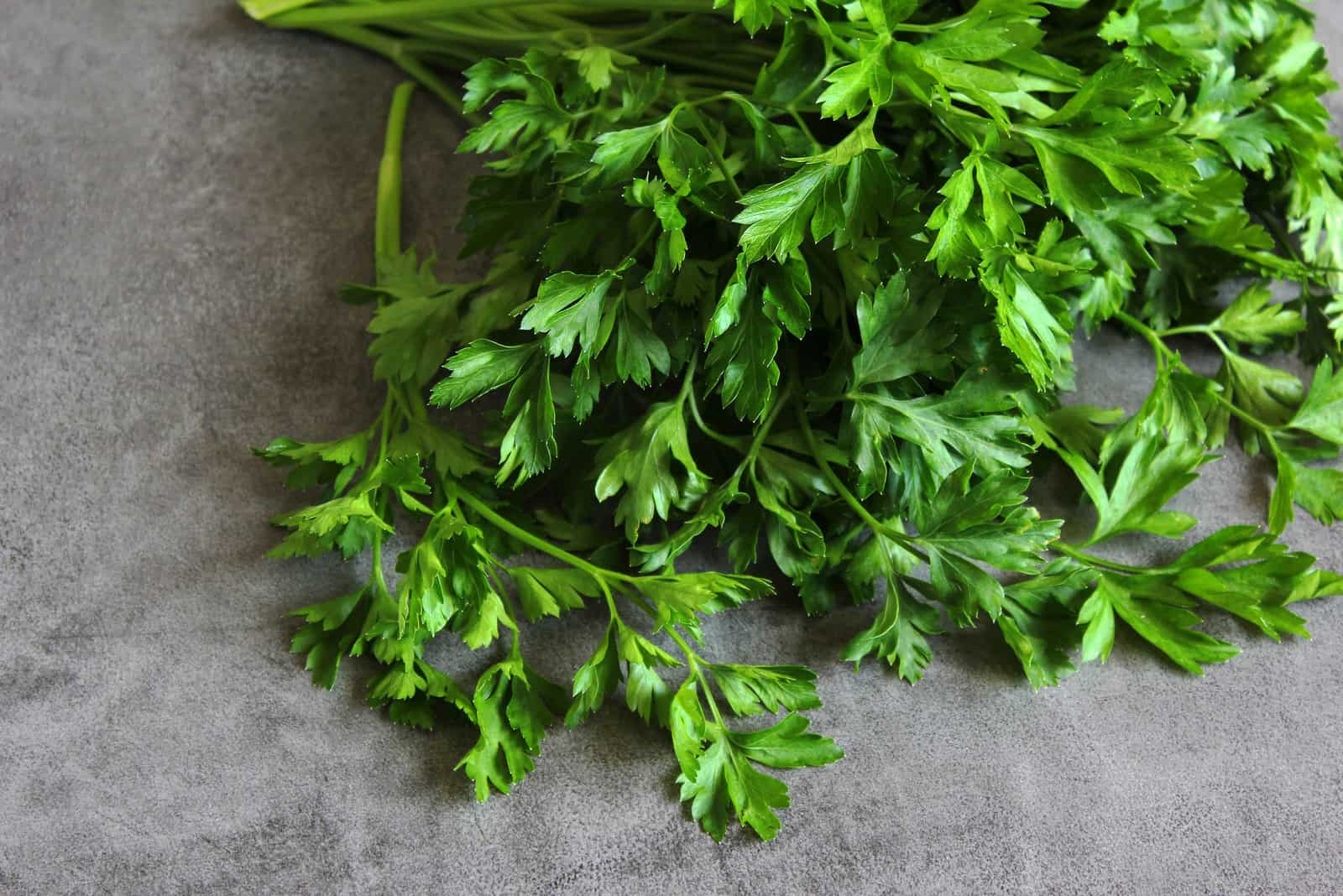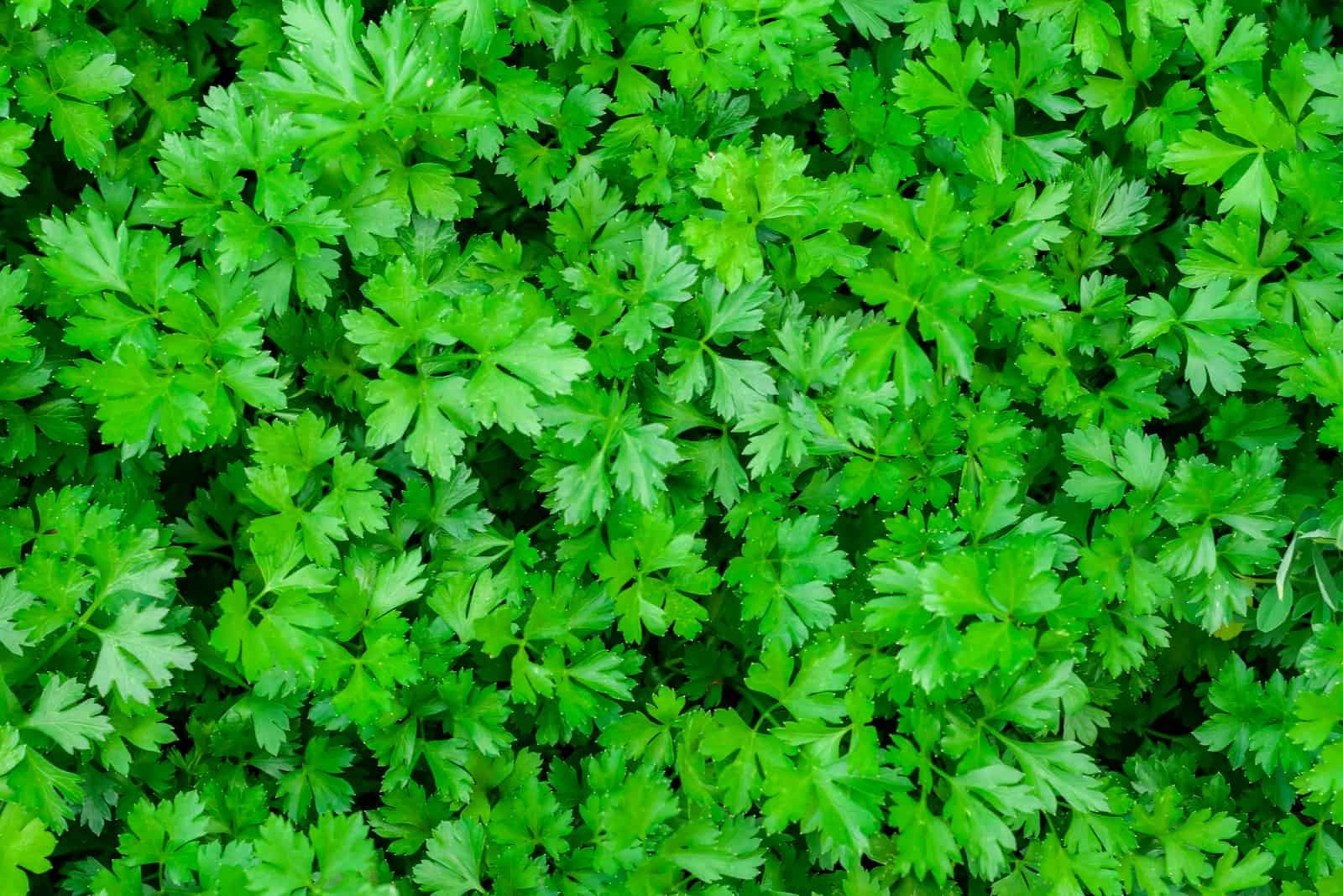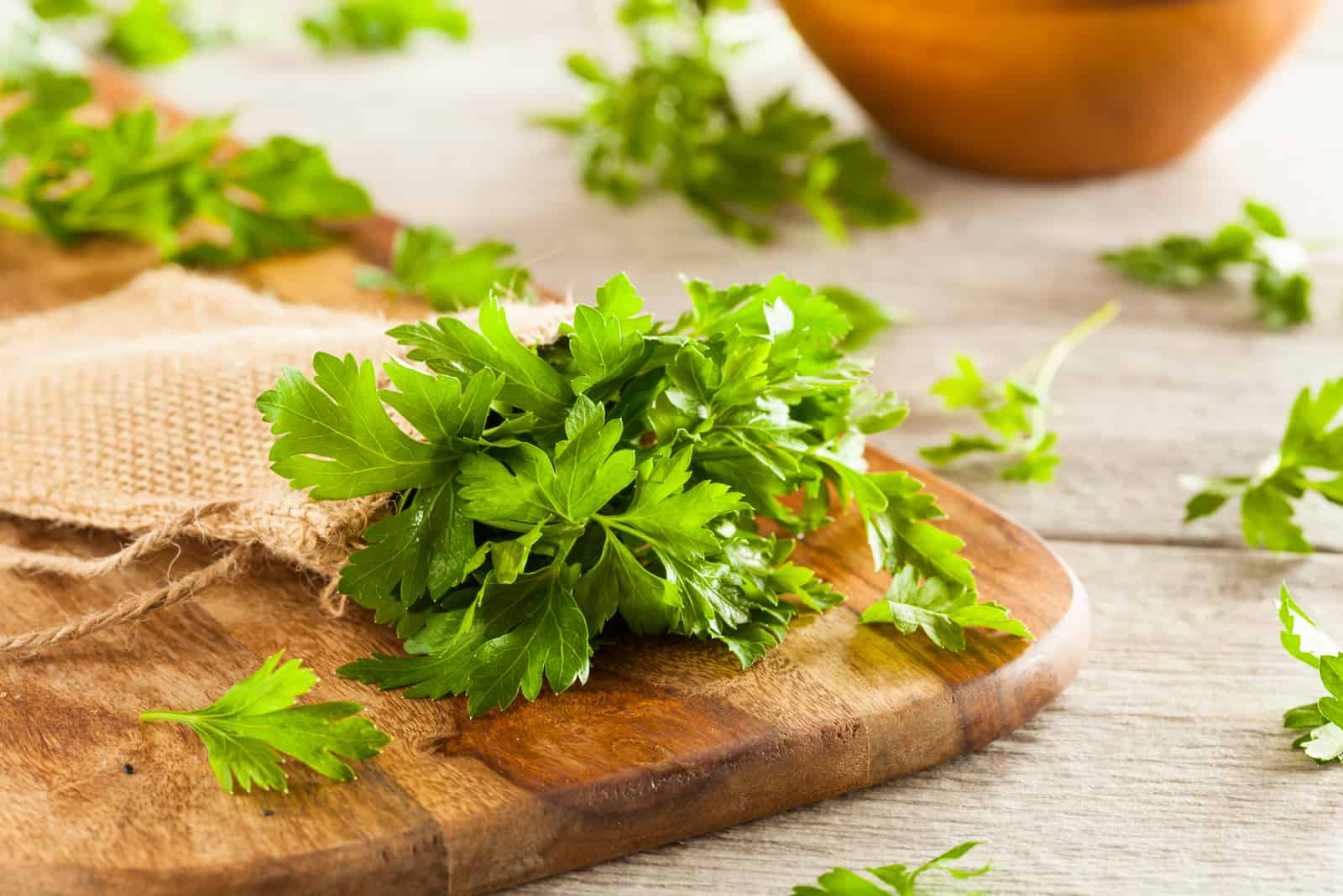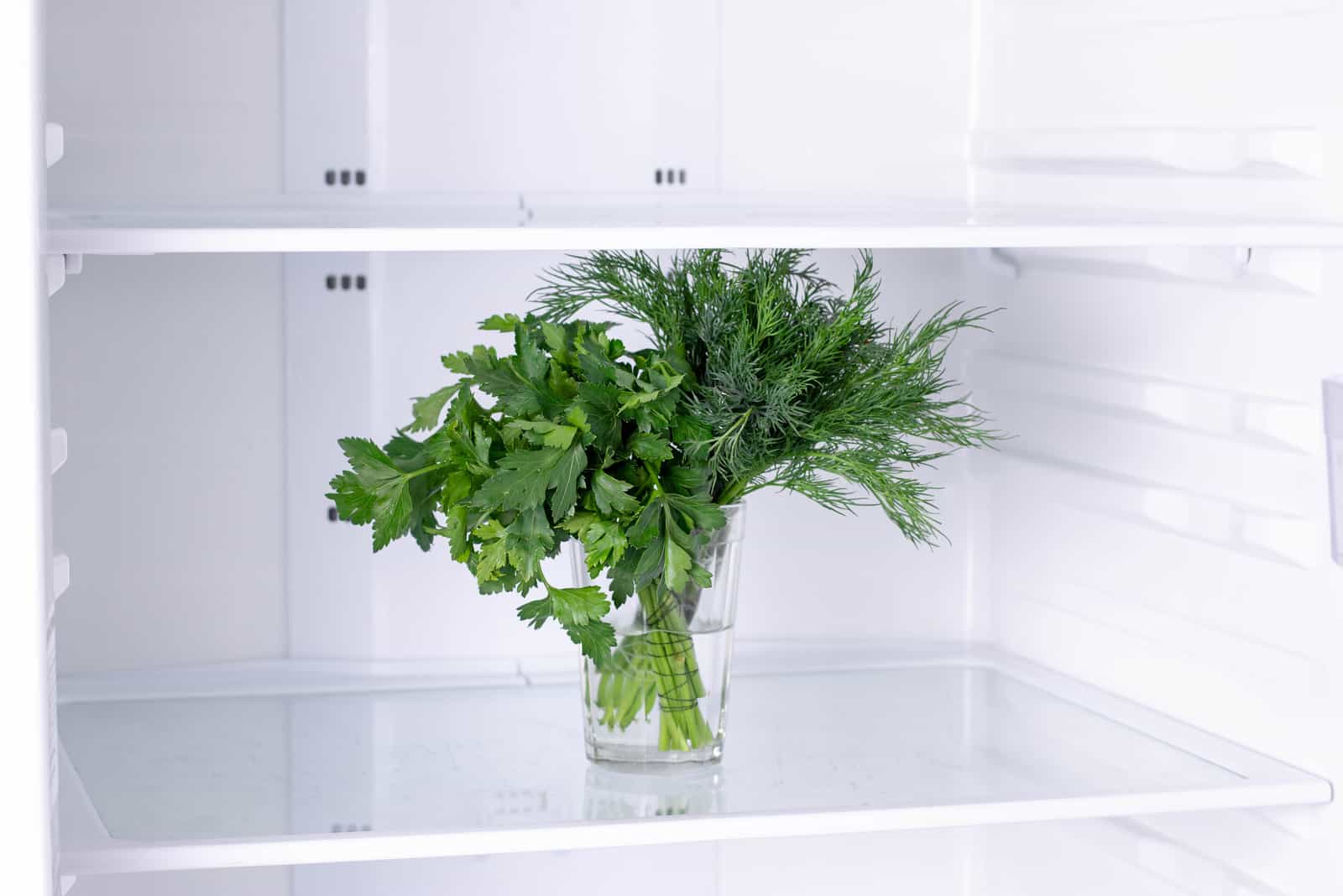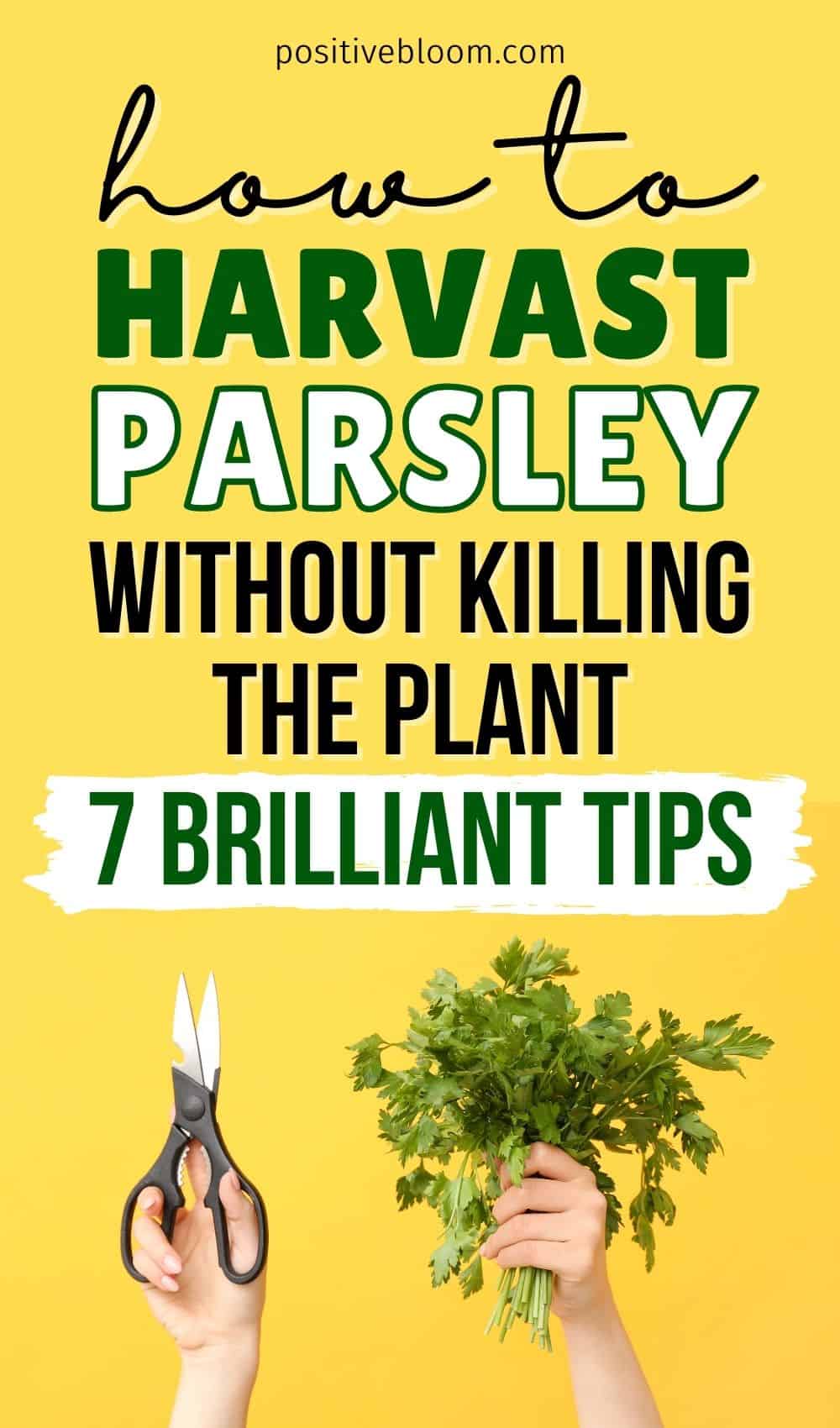I don’t know about you, but I love the wonderful smell of Fresh herbs! Especially Oregano, Thyme, and Basil, but my absolute favorite is Parsley.
Parsley, or Petroselinum crispum, is a Mediterranean herb that every aspiring cook should have in their kitchen or herb garden. It is commonly used as a culinary addition to soups, salads, pasta, and meat dishes, either as a garnish or spice. Its flavor can really do wonders for your cooking.
Parsley also has enormous health benefits from the vitamins A, C, K, and other antioxidants it contains. If you love this delicious and healthy herb, I’m sure you’ll want to learn how to harvest parsley without killing the plant, so make sure you check the rest of this article out to discover everything you need to know and more about keeping your parsley alive after you’ve harvested it.
Top 7 Tips For How To Harvest Parsley Without Killing the Plant
The most common varieties of parsley are curly leaf and flat-leaf parsley, also known as Italian parsley. The curly parsley is not that flavorful and grows bitter over time. It is often used as a salad garnish. The flat-leaf parsley has an aromatic effect and adds fresh flavor to various cuisines.
The cut-and-come principle is an excellent benefit of both of these types of parsley. No matter how much you cut it, it keeps coming back endlessly. Of course, that’s if you don’t kill it for good. That’s why these tips for how to harvest parsley without killing the plant are so important.
Tip 1: Avoid Harvesting Parsley in Winter
Parsley is said to thrive in cool weather, but doesn’t do well in frost and winter. If you do not harvest your parsley before the first frost, it will die, but it will then revive in early spring. To avoid this, always harvest parsley before winter sets in.
If placed outside during winter, ensure it gets proper protection like mulch or a row cover. You can also keep it indoors until the end of the winter season. It must be exposed to sunlight though.
Tip 2: Harvest Parsley In Its First Year of Growth
Parsley is a biennial plant, so it reaches its full potential during its first year before remaining dormant in the second year, so you must always harvest in the first cycle.
Tip 3: Don’t Harvest The Entire Plant
It’s important you don’t harvest the entire plant.
Whether for consumption or just pruning, you should always leave more than 1/2 of the plant behind in order for it to bloom. Remove all the imperfect leaves that are turning yellow or are brownish-looking.
Check on the plant after 2-3 weeks to ensure it starts growing out new shoots. If the parsley leaves are a vibrant green color, it’s a safe indicator of plant health.
Tip 4: Cut The Parsley From the Bottom
When harvesting parsley, it is essential that you cut the parsley from the bottom. This is because removing the parsley leaves without their stems can have an adverse effect on the plant’s growth, resulting in stagnation.
Make sure the leaves are cut from the stem base, and choose ones which have at least three leaves in their bundle. Do not pull off individual leaves as they may disintegrate.
Tip 5: Cut The Outer Stems, Not The Inner Stems
A plant is a living organism, and a fragile one at that. That is why you should always remove the outer portion or outer stems, and not the inner ones. Your parsley will not mind losing a stem or two as long as they are separated or branched off from the main stem.
After all, the outer stems are mature and ready for harvesting, and removing them makes space for new stems. Just be sure to take them from the right spot.
Tip 6: Cut The Entire Stem Approximately 1 Inch Above The Soil
To snip off the stems above the base of the plant or cut them in half will cause irreparable damage to it. This is why harvesting parsley safely involves cutting off the entire stem or stems, and making sure it is done at least 1 inch above the ground.
Tip 7: Use A Sharp and Clean Tool Such As Scissors Or Shears
We hope the importance of sharp and clean tools for parsley harvesting can go without saying, after all you wouldn’t entrust your hair to a hairdresser holding a pair of dull and dirty scissors, would you?
This is why you must always make sure your harvesting tools are sharp enough to cut cleanly. Rough cuts can damage parsley stems and cut the leaves in uneven halves or parts.
Before cutting, wipe the cutting surface with isopropyl alcohol. As for selecting a proper tool, you can choose between a sharp knife, kitchen shears, or garden shears. The choice is yours.
When Is Parsley Ready To Be Harvested?
Parsley is ready to harvest 2-3 months after planting, provided enough foliage has grown. If kept in dry, cool, or warm places, it can be harvested throughout the year.
If you’re unsure if your parsley can be harvested, inspect its stems and leaves. The parsley should be bushy with 6-14 inch tall stems. If there is a bundle of 3 or more leaves, they’re ready to be harvested.
Choose the stems or leaves that sprouted in the first growing season as they’ll have a strong flavor. Those that bloom in the second year may leave a bitter taste in your mouth.
Will Harvesting Parsley Kill The Plant?
Proper harvesting will not kill or hurt a parsley plant. Harvesting does not require much skill.
In case you still have doubts about the right way to harvest parsley, read the tips we provided once more. Ultimately, you can always replant the plant in a container, so there’s nothing to worry about really.
What Can Be Harvested From Parsley?
Parsley seeds, leaves, and roots can be harvested for different purposes and in small or large amounts. The best way to do it is by choosing the younger parsley parts for leaves and the mature ones for seeds.
Parsley seeds are amazing things! They are anti-microbial, anti-rheumatic, and antiseptic. They are also known for their detoxifying and diuretic effects.
Parsley leaves are often used in cooking, while the roots can be eaten cooked or raw. You can do almost anything with a parsley root – cut it, chop it, boil it, steam it, cream it, and add to your soup, stew, or veggie salad. You can even dry it and use it for flavoring.
Parsley roots also have health benefits. They can improve one’s skin, heart, kidneys, liver, and bone health, alleviate flatulence and spasms, boost one’s immune system, and reduce blood sugar. That’s so many beneficial properties just from a simple root!
How To Properly Store Parsley
Fresh parsley is often used as a garnish, cooking ingredient, or salad sprinkler. If not properly stored, parsley will wither away 1-2 weeks after being harvested. To prevent that from happening, check out these techniques to store parsley properly.
Method 1: Keep Parsley In the Refrigerator
The quickest way to store parsley is to keep it in the refrigerator. We suggest using a container like a canning jar with a lid. Take a canning jar, pour some water in it, place the cut sides of the parsley into the water, and close the lid. Ta-da! Your parsley will now stay fresh for a week or more.
Alternatively, you could wrap the parsley up in a damp paper towel, put everything in a sealable or plastic bag, seal the bag, and place it in the refrigerator. You could even put it in a glass of water and refrigerate it. Don’t forget to change its water every two days though!
Method 2: Dry The Parsley
Wash the parsley in cold water, remove tender or damaged foliage, and lay finely chopped or cut parsley on a sheet of baking paper. For faster drying, cover the parsley with another sheet and microwave for 30 seconds. Place the dried parsley in a container, and leave it in a dry and cool place.
You could also leave whole bunches of parsley in a dark and cool room for around two weeks. Crush or crumble the parsley and store in a container. You can use dry parsley as a cooking ingredient.
Method 3: Store Parsley in the Freezer
Cut the parsley leaves into small portions. Pour some water into ice cube trays and add the parsley. Store the parsley in the freezer.
Final Thoughts
We have learned so much about parsley today! From its culinary versatility to its medical applications. We have also learned how to harvest parsley without killing the plant.
With our seven awesome and handy tips, you won’t need to worry about hurting your precious parsley ever again! We hope our advice was helpful!
Until next time!
Like this post? Please share or pin it for later!

